Modern architectural designs demand a blend of creativity and precision to achieve a balance between aesthetics and functionality. One of the most prominent trends in contemporary architecture is the integration of diverse materials such as wrought iron, wood, and glass. This combination creates structures and designs that merge modernity with elegance. The interplay of these materials reflects technological advancements while maintaining traditional elements that add warmth and sophistication.
In this article, we will explore how wrought iron, wood, and glass can be harmoniously integrated into modern architectural designs, highlighting the benefits of this combination, the challenges faced by designers, and how to strike the perfect balance between beauty and functionality.
The Importance of Material Integration in Modern Architecture
As simplicity and modernity have become essential elements of contemporary architecture, designs are increasingly adopting a harmonious blend of different materials. Wrought iron adds strength and durability, wood brings a natural and warm touch, and glass provides transparency and openness. This harmony allows for versatile design solutions while achieving both visual and functional balance.
Advantages of Combining Wrought Iron with Wood and Glass
1. Multi-Dimensional Aesthetics
- Wrought Iron: Offers flexible design options, from intricate decorative patterns to sleek modern styles, making it a key component for enhancing visual details.
- Wood: Enhances the natural aspects of design, adding warmth to the solidity of iron and the coolness of glass.
- Glass: Creates a sense of openness, allowing natural light to flow and giving designs a spacious feel.
2. Strength and Functionality
- Iron provides durability and the ability to bear heavy loads.
- Wood contributes a traditional character and can be shaped to meet design needs.
- Glass enhances functional beauty by offering visibility and light penetration.
3. Sustainable Design
Using recyclable materials like iron and glass, along with sustainable wood, helps reduce environmental impact and achieve eco-friendly designs.
Applications of Material Integration
1. Exterior Facades
Exterior facades are the first opportunity to showcase this material integration. Wrought iron is used in gates and balconies, wood adds a natural character, and glass brings a modern touch that reflects light and creates stunning visual effects.
2. Interior Furniture
In interior design, wrought iron, wood, and glass can be combined in furniture such as tables, shelves, and chairs. For instance, wood can be used as the base of a table, with wrought iron frames and a transparent glass top.
3. Staircases and Pathways
Wrought iron is often used as the main support structure for staircases, with wooden steps and glass side panels, achieving a balance between safety and aesthetics.
4. Windows and Doors
Modern designs use wrought iron in window and door frames for strength, wood for decorative elements, and glass for transparency and openness.
Challenges in Material Integration and How to Overcome Them
1. Material Compatibility
Designers may face challenges in ensuring compatibility among the three materials. For example, iron may react to moisture, affecting wood or glass.
- Solution: Use advanced treatments for iron to resist corrosion and treat wood to protect it from environmental factors.
2. Cost
Integrating these materials can be more expensive than using a single material.
- Solution: Focus on using these materials in prominent or high-impact areas to reduce costs while maintaining aesthetics.
3. Achieving Visual Balance
The use of wrought iron can give the design an industrial and cold appearance, while wood or glass may dominate the overall design.
- Solution: Plan for a balanced interplay of the three materials with attention to detail.
Modern Techniques for Material Integration
1. 3D Printing
3D printing allows for the precise creation of wrought iron designs that can seamlessly integrate with wood and glass.
2. Advanced Bonding Techniques
Modern adhesives and bonding technologies enable seamless integration of materials without compromising their aesthetic appeal.
3. Digital Design Tools
Digital design tools such as CAD and BIM help visualize the integration of materials before actual implementation, ensuring the best results.
How to Choose the Right Materials
When working on a design that combines wrought iron, wood, and glass, several factors should be considered:
- Nature of the Project: Is it residential or commercial?
- Environmental Factors: Such as humidity and temperature.
- Project Budget: Determine materials that offer the greatest value for the cost.
- Visual Identity: Ensure the design aligns with the identity of the place and client preferences.
Successful Examples of Material Integration in Modern Architectural Designs
1. Glass Skyscrapers
Wrought iron frames support the glass exteriors, while wood is used for interior decor to balance the design.
2. Luxury Villas
In villas, wrought iron is often used in gates and fences, while wood and glass add a warm and contemporary touch to the interiors.
3. Commercial Buildings
In offices and retail spaces, these materials are used to create attractive facades that combine modernity with functional practicality.
Integrating wrought iron with wood and glass in modern architectural designs offers limitless opportunities for creativity and distinction. By combining strength, beauty, and functionality, designs can meet contemporary needs while preserving a unique character that reflects the personality of the project. Using modern techniques and thoughtful planning, challenges can be overcome, ensuring stunning architectural solutions that harmonize aesthetics and durability.

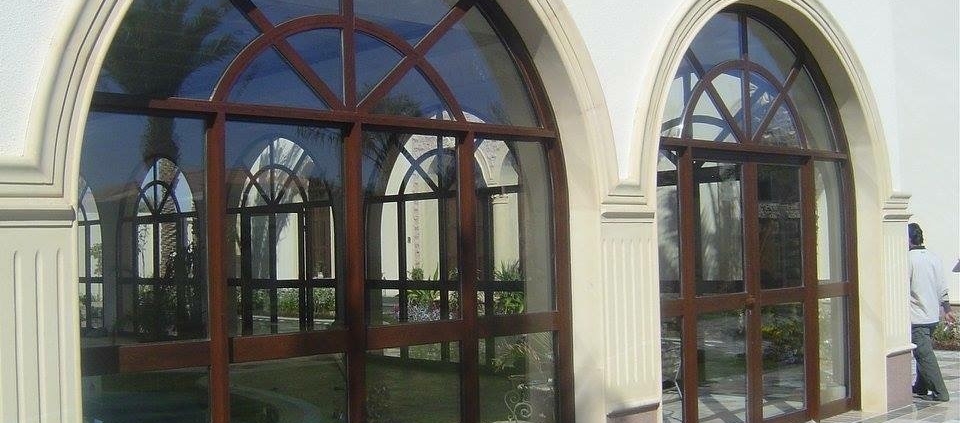
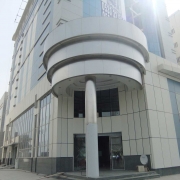
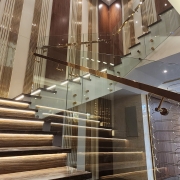
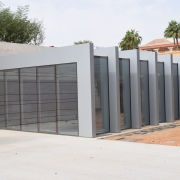
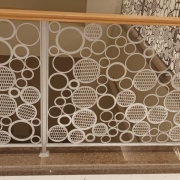
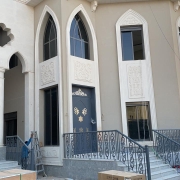
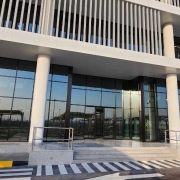
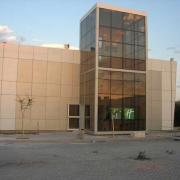
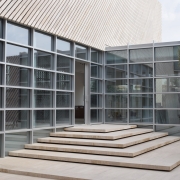


Leave a Reply
Want to join the discussion?Feel free to contribute!